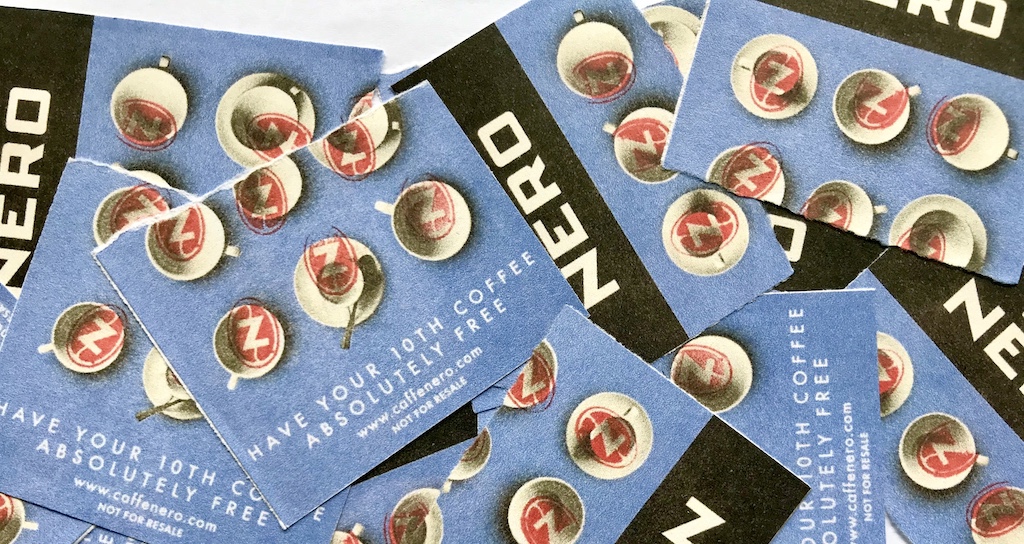
Loyalty cards can be a great way to drive business and market your services, but the era of stamping a card at the till could soon be over.
Reward schemes can certainly help companies build brand loyalty, retain customers and increase frequent sales by encouraging people to return to the store: ‘Buy 10 coffees and get one free’ is a tempting offer for anyone seeking a daily caffeine fix.
But loyalty cards in particular are losing their efficacy as more and more shoppers are sitting on unused cards.
In the US alone, of the 3.8 billion individual loyalty memberships more than half (54%) go unused, according to the 2017 COLLOQUY Loyalty Census.
At the same time, in the era of contactless mobile payments, more and more consumers are leaving their bulky wallets and loyalty cards at home in favour of their smartphone.
So if businesses keep offering outdated loyalty scheme using stamp cards, levels of engagement are only likely to decline.
In fact, over two-thirds (69%) of consumers want their loyalty cards to be digital, with the majority of those saying they would use them more if this was the case, according to Vibes’ 2018 US Mobile Consumer Report.
It might seem that the only way to deliver this is by building a mobile app, but this is costly, time-consuming and needs expensive ongoing maintenance.
Retailer-specific apps are also not popular with customers. Thyngs’ recent Mobile Loyalty Report showed that 39% of smartphone users would dislike being asked to download an app to collect loyalty points from a retailer. In fact, many smartphone users do not download any apps at all in an average month, according to Comscore.
The alternative might lie in new methods of mobile engagement that are being pushed by Apple and Google, social networks like Facebook, Pinterest, Snapchat and Twitter, and brands such as Kellogg and Nike.
Thyngs’ survey also showed that almost a half (47%) of smartphone users would be willing to use QR codes or near-field communication (NFC) tags to engage with retailers or brands in store. This percentage rose to 55% for 25-34 year-olds and peaked at 58% among customers aged 18-24.
The increased dependency on mobile, and customers’ willingness to use QR and NFC technology, presents an opportunity for retailers to reinvent their card-based loyalty scheme.
Retailers can now launch frictionless customer loyalty programmes and gain insights into their customers and repeat usage, with minimal disruption, cost, or hassles associated with mobile apps. Consumers, in turn, get rewarded for their custom with whatever rewards the company offers, without having to remember their loyalty card.
As Deloitte says in its 2017 Customer Loyalty: A relationship not just a scheme report, firms need to ease the burden on customers by making their journey frictionless and easier.
Whilst rewarding consumers for their repeat purchases is important, it is the overall experience that matters the most – to the benefit of both customers and businesses.
Make life easier for your customers and boost the uptake of your loyalty scheme to drive more sales with the easy to use Thyngs loyalty platform. We'll get you set up in no time! Talk to us.

